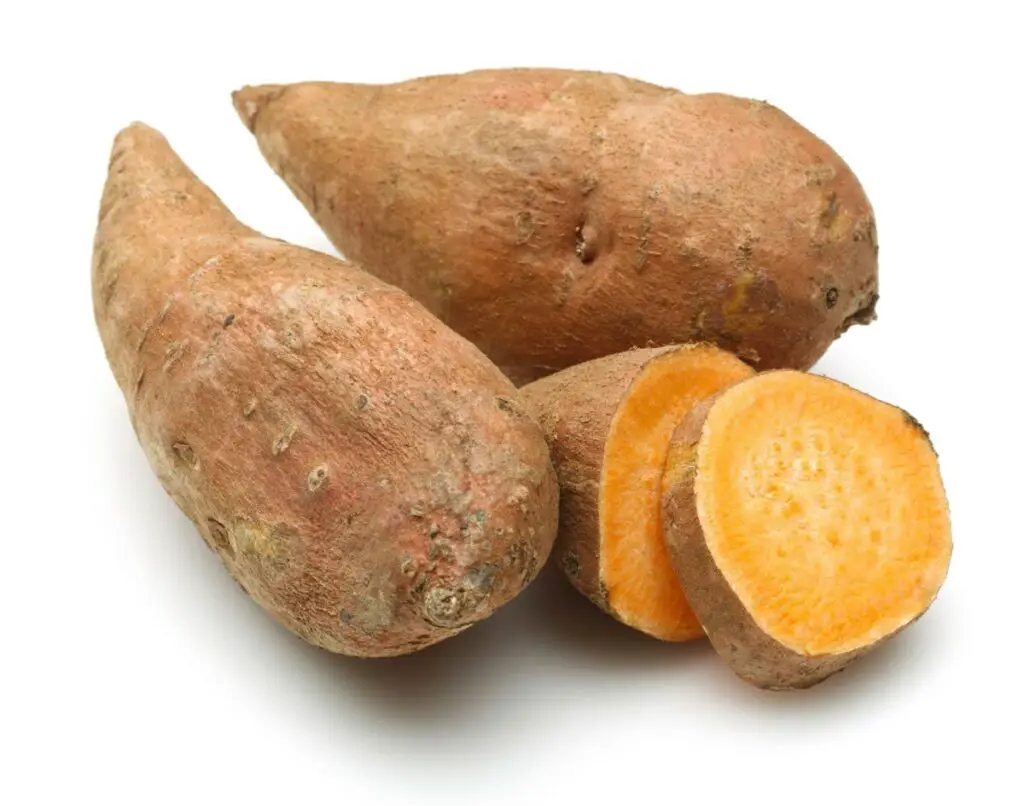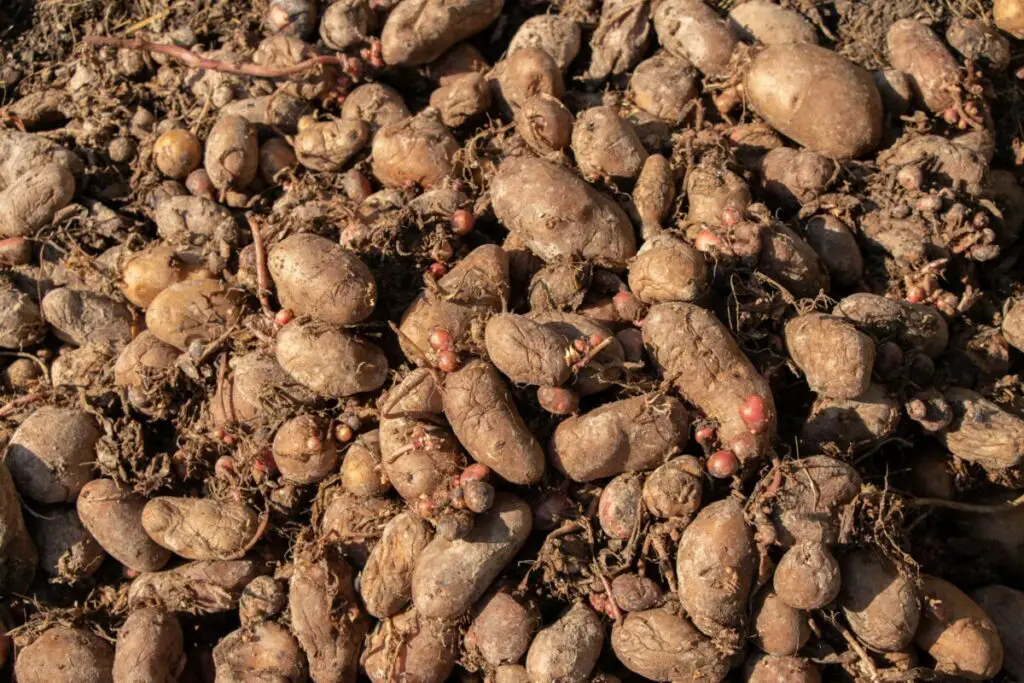
Sweet potatoes are great to have in the garden. However, can you keep them there indefinitely by leaving some tubers in the ground over winter?
If left in the ground over winter, sweet potatoes will grow back from the tubers as long as it doesn’t get too cold. If the tubers freeze, though, they will die and rot in the ground. Either can help a garden, though rotting tubers can foster an infestation of Late Blight through the winter.
Here’s your guide to using sweet potatoes as ground cover, caring for them over winter, and avoiding Late Blight.
Permanent Ground Cover
One great thing about growing sweet potatoes is the ground cover they provide. The vines spread all over, covering the ground with their wide leaves, but stay close to the ground. Because they grow this way, they keep light from reaching the ground, which does a lot to prevent weeds from popping up. If the weeds that are sprouting can’t get any light, they won’t grow.
At the same time, sweet potatoes don’t grow tall, allowing taller vegetables around them to still get light. For the most part, sweet potatoes won’t steal nutrients from the ground from other plants if they’re planted far enough away from each other. After all, the leaves do most of the spreading, and the roots will mostly stay where you planted them.
That doesn’t mean that sweet potatoes will grow harmoniously with every type of plant. Squash plants, like spaghetti squash, zucchini, and pumpkin, also do a lot of spreading out as they grow, and they have big leaves that could block light to your sweet potatoes. These plants will compete with your sweet potatoes for space and nutrients.
As the squash grows from the vines, the intermingling of these plants could also cause some of the sweet potato vines to be crushed by the squash. If you want to grow both of these plants in the same garden, you should take care to keep them separate. Plant them far away from each other, and maybe try guiding the vines by hand so that they stay separate as they grow.
Now, if you want to use sweet potatoes as permanent ground cover, you’re going to have to keep your climate in mind. Depending on where you live, you might be able to leave the plants in the ground indefinitely. After all, they’re perennials, and they’ll grow back in the spring, but only if they survive the winter.
You can definitely leave them in the ground if you’re in the USDA plant hardiness zones 9, 10, or 11. These zones are warm enough that the sweet potatoes won’t freeze and die over the winter. If you live north of zone 11, you’re going to have to take special care of your potatoes if you want to have them around in the spring.
Winter Care
The easiest way to care for your sweet potato plants over the winter is to bring them inside. You can do that either by bringing tubers or vine cuttings in to cultivate. This way, you will have a plant ready to go once spring comes.
To bring tubers inside, cut the vines right where they come out of the ground, then carefully dig around for the tubers. Try not to cut any. Put them in a container with potting soil and wait for them to sprout into a plant that you can put into your garden in the spring.
You can also take a cutting of the vine inside. Put the vine cutting in a glass vase or jar so that you can see the roots grow. Prune off any leaves that touch the water to prevent rot.
Late Blight: What it is and How to Avoid an Outbreak

Late Blight is no joke. It’s responsible for the Irish Potato famine of 1845-1849, as well as an outbreak in 2009 that destroyed potato and tomato crops in 17 northeast states. It’s caused by the pathogen Phytophthora infestans, which thrives in cool and damp environments and can spread like crazy through your crops.
Late Blight infects the whole sweet potato plant: tuber, roots, leaves, and all, destroying the plant and then sending its spores to other plants on the wind. Infection can set in when the humidity goes above 90% while the temperature is between 60°F and 78°F. Once a plant is infected, the fungus spreads rapidly through the plant, then creates spores on the leaves for the wind to spread.
If the humidity in your area rarely gets above 90%, you might not have anything to worry about, but if your climate often reaches those humidity and temperature conditions at the same time, especially in the fall, you’re going to want to keep a close eye out for signs of Late Blight.
How to Spot it
One symptom of late blight is the plant having large brown blotches on the leaves with a greenish-gray edge. The blotches are amorphous and not confined by the veins of the leaf. Large sections of the plant may turn dry and brown, and stems will get dark brown infections that have rounded edges.
If the humidity is especially high, the leaves might develop thin white powdery growths of the fungus. Potato tubers will be discolored, ranging from red to purple to brown, and they will rot and soften, quickly turning to mush.
How to Prevent it
If you spot an infection early, remove the infected sections of the plant as quickly as possible. You might be able to head off an infection if you catch it soon enough, though some blights might seem to hit the entire field at once like frost. The better thing to do is to take steps to prevent an outbreak by keeping it out of your field in the first place.
The most common way for an infection to start is through the seed tubers. If tubers in your field are infected from the previous year, the fungus can spread from that potato plant after it grows. Spores can also come from transplanted tomato plants, or they might be able to stay in the soil over winter if the conditions are right.
That means the best way to prevent it is to make sure you don’t have any infected tubers in the ground when spring comes, and then to head off any infections as soon as you see them. You should also avoid planting your potatoes near tomatoes and sunflowers.

